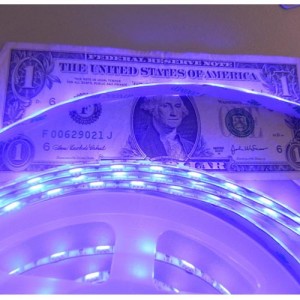UV is an effective tool for crime scene investigations, it can locate and identify body fluids, such as semen, blood and saliva. For example, injection of a liquid or saliva is Easily detected by
a high-power UV light source(from ultraviolet led strip

), whether fluid deposition in structure or surface color. UV visible microscope was also used to analyze trace evidence, such as textile fiber and paint chips, and questioned documents.
Second, the identification
UV can also be applied to other detective work, including various collections and works of art, authentication, and even the lack of UV fluorescent marker dyes. Under visible light, even the unmarked material may look the same, but the fluorescence has different levels under ultraviolet irradiation, or may be based on different Wavelength of ultraviolet fluorescent UV.
Third, reading, Identify that illegible papyrus and manuscripts Multi-spectral imager can read the illegible papyrus, such as burnt papyrus scrolls or Oxyrhynchus papyri, or Archimedes Palimpsest. The technique involves taking pictures of illegible documents using different filters, infrared or ultraviolet range, fine-tuning to capture a specific wavelength of light.
Fourth, chemical bookmark
Many applications use UV fluorescent dyes in the program (for example, biochemistry and forensics). Green fluorescent protein (GFP) is often used as the genetic marker. Many substances, such as proteins, with absorption bands in the ultraviolet light, and use in biochemistry and related fields. Spectrophotometric detector UV function is very common in the laboratory.